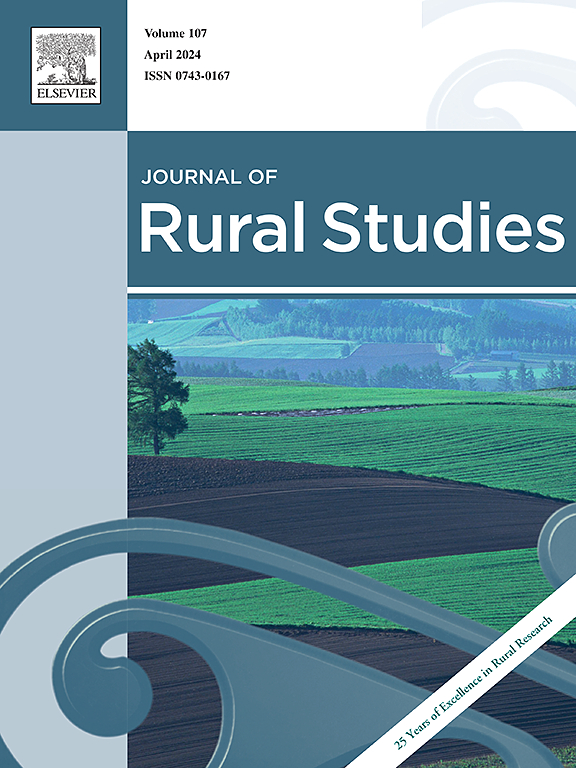流离失所的途径:对农村和偏远无家可归者的性质和动态的泛加拿大观点
IF 5.1
1区 社会学
Q1 GEOGRAPHY
引用次数: 0
摘要
无家可归经常被描述为一个“邪恶的问题”。这是一场复杂、定义不清、看似棘手的公共卫生危机,涉及多个部门,没有立即或容易解决的办法。加拿大农村和偏远社区的无家可归问题在很大程度上仍然是一个隐藏的现象,很少受到研究人员、政策制定者和政府官员的关注。这种疏忽令人震惊,因为农村和偏远地区的无家可归人口十分普遍,其比率等于或高于城市中心。这项研究的目的是通过突出农村和偏远地区无家可归者的具体特征和当代趋势来解决这一知识差距。了解这种情况的细微差别对于制定有针对性的政策和干预措施以预防和减少无家可归现象至关重要。在2021-2022年期间,与加拿大十个不同社区的服务提供者举行了焦点小组讨论,涵盖五个省和所有三个地区,都属于加拿大统计局城乡连续体小人口中心的地理分类。从焦点小组中,关于农村和偏远地区无家可归者的数据被分类为谁、帮助、在哪里和文化/环境的主要类别。最近的挑战,如COVID-19和住房市场的变化,极大地改变了影响这些地区无家可归的传统因素。为了减少这些社区的无家可归现象,需要采取多种方法,考虑到影响农村和偏远地区无家可归现象的社会、结构、文化和背景因素,而不是采用一揽子解决办法。本文章由计算机程序翻译,如有差异,请以英文原文为准。
Pathways of displacement: A pan-Canadian perspective on the nature and dynamics of rural and remote homelessness
Homelessness is often described as a ‘wicked problem’. It is a complex, ill-defined and seemingly intractable public health crisis, crossing multiple sectors, with no immediate or easy fix. The issue of homelessness in Canada's rural and remote communities remains largely a hidden phenomenon receiving little attention from researchers, policymakers, and government officials. This oversight is alarming in light of the fact that the prevalence of homeless populations in rural and remote areas is significant, with rates equal to or higher than those of urban centres. The aim of this research is to address this knowledge gap by highlighting specific characteristics and contemporary trends of rural and remote homelessness. Understanding the nuances of this context is essential for developing targeted policies and interventions to prevent and reduce homelessness. Focus groups were held with service providers from ten distinct communities across Canada in 2021–2022, spanning five provinces and all three territories, and all falling within the Statistics Canada geographic classification of small population centres on the urban-rural continuum. From the focus groups, data on rural and remote homelessness were classified into the primary categories of who, help, where, and culture/context. Recent challenges, like COVID-19 and changes in the housing market, have significantly altered the conventional factors affecting homelessness in these settings. To decrease homelessness in these communities, a diverse approach is needed accounting for the social, structural, cultural, and contextual elements that influence rural and remote homelessness, instead of applying a blanket solution.
求助全文
通过发布文献求助,成功后即可免费获取论文全文。
去求助
来源期刊

Journal of Rural Studies
Multiple-
CiteScore
9.80
自引率
9.80%
发文量
286
期刊介绍:
The Journal of Rural Studies publishes research articles relating to such rural issues as society, demography, housing, employment, transport, services, land-use, recreation, agriculture and conservation. The focus is on those areas encompassing extensive land-use, with small-scale and diffuse settlement patterns and communities linked into the surrounding landscape and milieux. Particular emphasis will be given to aspects of planning policy and management. The journal is international and interdisciplinary in scope and content.
 求助内容:
求助内容: 应助结果提醒方式:
应助结果提醒方式:


